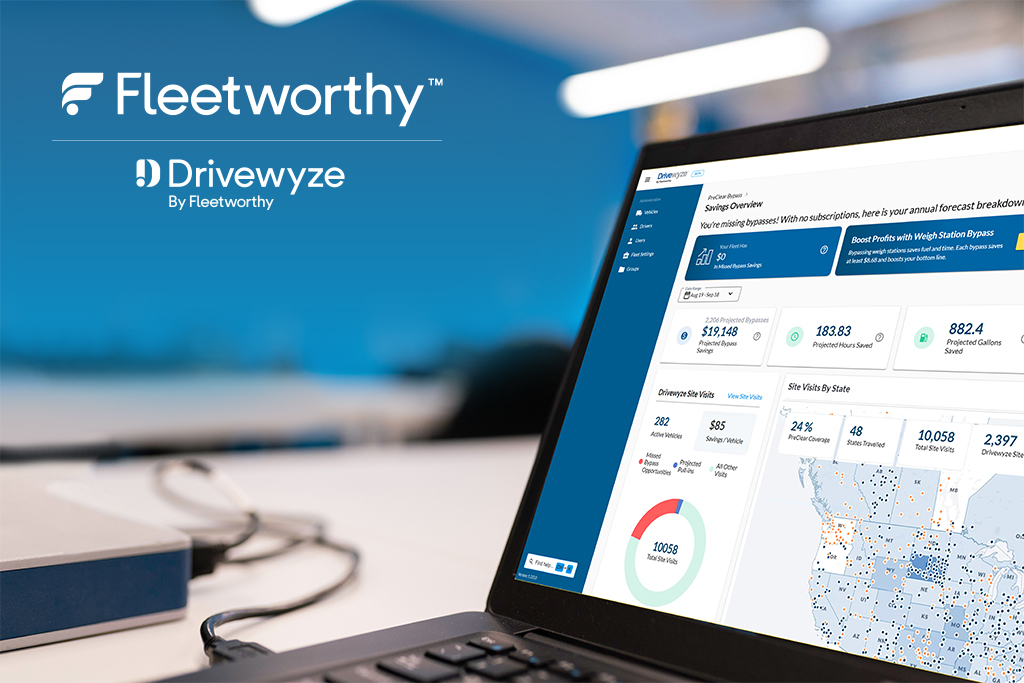For fleet operators, few things are more critical than keeping vehicles safe, reliable, and on the road. Preventive maintenance is the foundation of effective fleet operations; it ensures that vehicles are serviced proactively rather than waiting for something to break down. This not only reduces costly repairs and unexpected downtime but also enhances driver safety and extends the life of your fleet.
A fleet maintenance checklist is an essential tool that provides a structured, repeatable process to ensure that every vehicle in your operation receives consistent, thorough inspections and services. Whether you’re managing a few service vans or an entire fleet of trucks, using a checklist helps you stay organized, stay compliant, and avoid missing critical maintenance tasks.
In this article, we’ll walk you through everything you need to create and implement an effective fleet preventive maintenance program. You’ll learn:
- What fleet maintenance management is and why it matters
- The key elements that belong in your fleet maintenance checklist
- Best practices and tips to improve your strategy
- How to leverage tools and templates to streamline your process
Whether you’re building a program from scratch or looking to refine an existing one, this guide will provide practical, actionable steps to enhance your fleet’s performance and safety.
What is Fleet Maintenance Management?
Fleet maintenance management is the structured process of overseeing, scheduling, and executing maintenance activities to ensure every vehicle in your fleet operates safely, efficiently, and in compliance with regulations. It includes routine service, repairs, inspections, and data tracking to maintain the health of fleet assets over time.
The core objectives of fleet maintenance management are simple but vital:
- Prevent vehicle breakdowns and minimize operational disruptions
- Ensure regulatory compliance with DOT and FMCSA standards
- Optimize the performance and lifespan of fleet assets
- Support budgeting and cost control by reducing unplanned repairs
A well-defined fleet maintenance strategy ensures that maintenance is not left to chance or handled reactively. Instead, it incorporates consistent scheduling, data-driven decision-making, and the use of maintenance history to forecast future needs. This approach helps fleet managers avoid the pitfalls of last-minute repairs and emergency downtime, both of which can be costly and dangerous.
At the heart of this strategy is preventive maintenance: the regular servicing of vehicles based on time, mileage, engine hours, or other usage metrics. Preventive maintenance is the cornerstone of fleet longevity because it addresses potential issues before they lead to failures. It’s the difference between replacing worn brake pads during a routine check versus dealing with a failed braking system on the road.
The contrast between proactive and reactive maintenance is critical here:
- Proactive maintenance is planned, scheduled, and data-informed. It keeps your fleet healthy and predictable.
- Reactive maintenance occurs after a failure. It’s disruptive, costly, and often indicates gaps in your strategy.
Effective fleet maintenance management is not just about fixing vehicles, it’s about having the systems, processes, and tools in place to prevent problems before they start. In the next section, we’ll explore how a structured fleet maintenance checklist helps make that possible.
Benefits of a Fleet Maintenance Checklist
A well-structured fleet maintenance checklist is more than just a tool, it’s a foundational element of any successful preventive maintenance program. Standardizing inspections and service tasks across your vehicles enables consistency, accountability, and long-term operational efficiency. Below are some of the key benefits that make a checklist an essential asset for modern fleet operations.
Increased Uptime and Reduced Emergency Repairs
Unscheduled breakdowns are one of the most disruptive and costly issues fleet operators face. A preventive maintenance checklist ensures that critical components such as brakes, tires, fluids, and electrical systems are inspected and serviced at regular intervals, helping to detect wear or faults before they lead to failure. By catching problems early, you reduce the risk of roadside incidents and keep vehicles available when they’re needed most.
This results in more predictable schedules, fewer service interruptions, and enhanced reliability across the entire fleet.
Enhanced Driver Safety and Compliance
A checklist-driven approach to maintenance directly supports both driver safety and regulatory compliance. Ensuring that vehicles are mechanically sound reduces the likelihood of accidents caused by component failures, such as tire blowouts or brake malfunctions.
Additionally, consistently following a maintenance checklist helps ensure compliance with federal safety regulations, including those of the FMCSA and DOT. This not only protects your drivers but also shields your business from potential violations, fines, and audit risks.
Lower Total Cost of Ownership (TCO)
Preventive maintenance might seem like an ongoing expense but it’s one that pays off over time. A checklist helps extend the service life of vehicles by ensuring that engines are properly lubricated, filters are clean, and parts are replaced before they degrade.
By avoiding costly emergency repairs, towing fees, and premature vehicle replacements, fleets can significantly reduce their total cost of ownership. Small, scheduled maintenance tasks are far less expensive than major component failures caused by neglect.
Better Fleet Planning and Lifecycle Management
A consistent maintenance routine powered by checklists provides clear visibility into vehicle condition, repair frequency, and service history. This data supports more innovative fleet planning, helping you make informed decisions about when to schedule replacements, how to allocate vehicles, and where to invest in upgrades.
Maintenance insights also contribute to long-term fleet maintenance strategies, including budgeting, resource allocation, and sustainability goals.
Components of an Effective Fleet Maintenance Checklist
An effective fleet maintenance checklist ensures consistency and thoroughness across all vehicle inspections and service routines. It serves as both a guide and a record, helping your maintenance team adhere to best practices while staying aligned with manufacturer recommendations and regulatory standards.
Below are the essential components to include in your checklist, organized into four key categories that reflect the lifecycle of a well-maintained fleet.
Vehicle Inspection Basics
Daily and pre-trip inspections are the first line of defense against unexpected breakdowns. This section of the checklist should encompass all vital systems that impact vehicle performance and safety.
- Engine Oil and Fluid Levels: Check the oil, coolant, transmission fluid, brake fluid, and windshield washer fluid levels. Look for signs of leaks, contamination, or abnormal levels.
- Tires and Brakes: Inspect tire tread depth, inflation, and sidewall condition. Inspect the brake pads, rotors, and air brake systems (if applicable) for signs of wear or damage.
- Lights and Electrical Systems: Verify that all lights (headlights, brake lights, turn signals) and electrical components (horn, power systems, battery terminals) are functioning properly.
- Windshield Wipers and Mirrors: Ensure wipers are effective and blades are intact. Check for clean, properly adjusted mirrors to maintain visibility.
Scheduled Maintenance Tasks
These tasks are based on mileage, engine hours, or calendar intervals. Following OEM-recommended service schedules is essential to preserving warranty coverage and maximizing asset longevity.
- OEM-Recommended Service Intervals: Follow the manufacturer’s guidelines for oil changes, belt replacements, transmission services, and other scheduled maintenance. Automate reminders using fleet software where possible.
- Seasonal Inspections: Prepare for weather-related changes such as cold starts, icy roads, or high heat. Inspect heaters, defrosters, AC systems, and coolant.
- Battery Checks: Test battery voltage and inspect for corrosion or loose connections. Batteries should be replaced on a predictable cycle to prevent sudden failure.
- HVAC System Tests: A functional HVAC system ensures driver comfort and safety in extreme temperatures. Check for airflow issues, refrigerant levels, and component wear.
Compliance & Safety Checks
Maintaining compliance with federal and state regulations is non-negotiable. A proactive approach ensures you’re always ready for audits or roadside inspections.
- DOT Inspection Readiness: Ensure that all required components, such as brakes, tires, lights, mirrors, and emergency equipment, are in compliance with FMCSA/DOT standards.
- Emissions and Environmental Checks: Conduct regular emissions testing and inspect exhaust systems to ensure compliance with environmental regulations and avoid fines.
- Safety Equipment (e.g., Fire Extinguishers, Emergency Kits): Verify that each vehicle is equipped with the required safety gear. This includes fire extinguishers, first-aid kits, warning triangles, and reflective vests.
Recordkeeping and Documentation
Maintenance is only effective when it’s trackable. Documentation helps monitor compliance, support warranty claims, and provide valuable insight for future planning.
- Maintenance Logs: Record all inspections, services, and repairs, including the date, mileage, and technician’s notes. Logs should be easily accessible and auditable.
- Inspection Reports: Standardize inspection forms to ensure consistency and accuracy. These should be signed and dated by drivers and technicians.
- Use of Digital Tools or Maintenance Checklist Templates: Adopt digital tools or fleet management platforms to automate scheduling, store service records, and generate real-time reports. Leverage maintenance checklist templates to streamline onboarding and training.
Tools and Templates for Fleet Maintenance
Modern fleet operations demand more than paper-based checklists and manual logs. As fleets grow in size and complexity, digital tools and standardized templates become essential for ensuring that maintenance procedures are efficient, consistent, and auditable. This section examines how technology and templates collaborate to streamline execution and enhance your overall maintenance strategy.
Overview of Digital Tools and Platforms
Fleet maintenance software platforms have evolved into powerful hubs that centralize data, automate schedules, and track every aspect of vehicle health. These tools eliminate guesswork and human error by allowing you to:
- Set automated reminders for preventive maintenance tasks based on mileage, engine hours, or dates
- Log inspections and repairs digitally in real time
- Monitor trends in downtime, parts usage, and recurring issues
- Generate maintenance reports for compliance, budgeting, and performance analysis
Leading platforms often include mobile apps for technicians and drivers, GPS-based diagnostics, and integrations with parts inventory systems. The result is a connected ecosystem that keeps your fleet running smoothly and allows your team to respond quickly to any maintenance need.
How to Use Maintenance Checklist Templates to Standardize Procedures
Consistency is key in preventive maintenance. One of the best ways to achieve it is by using maintenance checklist templates tailored to your fleet’s vehicle types, duty cycles, and regulatory obligations. These templates help ensure that:
- No critical inspection item is overlooked
- Each maintenance task follows a step-by-step procedure
- Technicians and drivers follow the same standards across all locations
Templates can be adapted for different vehicle classes, such as light-duty vans, Class 8 trucks, or specialized equipment, and easily updated as compliance requirements or internal policies evolve. Many digital tools offer customizable templates built into their platforms, making it simple to apply them across your fleet.
Integration with Telematics and Fleet Management Systems
The most advanced maintenance programs are deeply integrated with telematics and fleet management systems. These integrations unlock real-time insights and predictive analytics that transform how maintenance is planned and performed.
For example, telematics systems can:
- Alert you instantly to fault codes, engine issues, or abnormal driver behavior
- Feed live data into your maintenance platform to trigger work orders automatically
- Provide insights into vehicle utilization that help adjust PM schedules based on actual wear and tear
When combined with your fleet management checklist, these systems create a feedback loop that continuously improves your maintenance operations. Instead of reacting to issues after they occur, you can prevent them before they disrupt your business.
This strategic use of tools and templates lays the foundation for a scalable, compliant, and high-performing fleet maintenance program. In the next section, we’ll share practical tips to ensure your strategy delivers long-term success and measurable results.
Fleet Maintenance Tips for Long-Term Success
Building a preventive maintenance program is only the beginning; long-term success requires continuous refinement, team involvement, and the innovative use of data. These tips will help your operation sustain a high-performing fleet maintenance strategy over time.
Implement Driver Inspection Routines
Your drivers are your first line of defense against vehicle issues. Implementing consistent pre-trip and post-trip inspection routines empowers them to catch minor problems, such as low tire pressure, fluid leaks, or broken lights, before they become major breakdowns.
Provide drivers with simple, mobile-friendly checklists that align with your official fleet maintenance procedures. Encourage the immediate reporting of any concerns, and ensure that your maintenance team prioritizes follow-up accordingly. Not only does this keep vehicles in top condition, but it also promotes accountability and a stronger safety culture.
Use Predictive Analytics from Telematics
Predictive maintenance is no longer a futuristic concept, it’s a powerful reality, thanks to the integration of telematics. By analyzing engine diagnostics, driver behavior, and component performance trends, telematics systems can help predict failures before they happen.
For example, if a vehicle’s brake wear is accelerating faster than expected, or its engine is consistently running hotter than average, the system can trigger alerts and recommend early intervention. This allows you to fix issues during scheduled downtime rather than facing unexpected roadside failures.
Leveraging predictive analytics is a crucial component of transitioning from a reactive to a proactive fleet maintenance strategy.
Schedule Maintenance Based on Mileage and Engine Hours
While traditional calendar-based maintenance can be effective, it’s often less accurate for diverse fleets with varying usage patterns. A more precise approach is to schedule preventive maintenance based on mileage and engine hours, which more directly reflect vehicle wear and usage intensity.
This is particularly useful for vehicles that idle frequently, operate in extreme conditions, or are heavily used during specific seasons. Most fleet maintenance platforms and telematics systems can automate tracking and alerts based on these metrics, helping you optimize service timing for each asset.
Foster Communication Between Drivers and Maintenance Teams
No matter how advanced your tools are, a lack of communication between drivers and maintenance staff can derail your program. Establish a robust feedback loop where drivers feel confident in reporting concerns and technicians can easily follow up with status updates or service notes.
Consider implementing:
- A digital platform or app where drivers can log issues in real time
- A transparent chain of responsibility for addressing reported problems
- Regular check-ins or toolbox talks to discuss recurring maintenance trends
Fostering this open line of communication leads to quicker issue resolution, stronger team collaboration, and a safer, more efficient fleet.
Building Your Fleet Maintenance Strategy
While checklists, tools, and templates provide the foundation, long-term success depends on turning those elements into a cohesive and sustainable fleet maintenance strategy. A strategy ensures that your maintenance program not only operates efficiently on a day-to-day basis but also evolves with your business, adapts to regulatory changes, and supports larger operational goals.
Aligning the Checklist with Your Fleet’s Operational Goals
A strong strategy begins by aligning your fleet maintenance checklist with the specific needs of your operation. Maintenance requirements can vary significantly depending on factors such as fleet size, vehicle types, duty cycles, climate, and geographic coverage.
Ask yourself:
- Are your vehicles being maintained in a manner that supports your delivery schedules and service commitments?
- Does the checklist reflect seasonal changes or regional operating conditions?
- Are maintenance intervals optimized for maximizing asset utilization, improving fuel efficiency, and ensuring driver availability?
By customizing your maintenance plan to support broader objectives such as reducing downtime, enhancing customer satisfaction, or meeting sustainability targets, you ensure that maintenance becomes a strategic asset, rather than just a compliance requirement.
Training Staff and Drivers on the Process
Even the most sophisticated strategy will fall short without proper training and buy-in from your team. Mechanics, technicians, and drivers all play a crucial role in executing preventive maintenance tasks and accurately reporting issues.
Develop a training program that:
- Explains the purpose and importance of preventive maintenance
- Walks through how to use inspection forms or digital checklists
- Clarifies roles and responsibilities in reporting and resolving maintenance concerns
- Includes refreshers on compliance topics like DOT inspections or emissions standards
Make training part of your onboarding process for new hires, and offer regular updates when tools or procedures change. When everyone understands the “why” behind maintenance tasks, adherence and performance improve dramatically.
Measuring and Tracking KPIs: Downtime, Cost per Mile, PM Compliance Rate
A maintenance strategy must be measurable. Tracking key performance indicators (KPIs) enables you to evaluate whether your efforts are effectively reducing risk, lowering costs, and enhancing vehicle availability.
Here are three essential metrics to monitor:
- Downtime per vehicle: Track the number of hours or days a vehicle is unavailable due to maintenance. Reducing unplanned downtime is a clear sign of a successful program.
- Cost per mile: This includes fuel, repairs, and preventive maintenance expenses. A declining trend suggests better efficiency and cost control.
- Preventive Maintenance (PM) compliance rate: Measures the frequency of maintenance tasks being completed on time. High compliance means you’re staying ahead of breakdowns and minimizing risk.
Use fleet management software to visualize these KPIs over time. Benchmarking your fleet against industry standards or even comparing internally across locations or departments can help identify opportunities for optimization.
Your maintenance strategy is the glue that connects people, processes, and technology. When properly aligned, trained, and measured, it not only keeps vehicles on the road but also helps your fleet run smarter, safer, and more cost-effectively.
Conclusion
A well-executed fleet maintenance checklist can help fleet managers by standardizing inspections, improving safety, reducing unexpected repairs, and ensuring compliance. A strong checklist empowers your team to stay proactive rather than reactive.
But having the checklist is just the beginning. The most successful fleets utilize it as part of a comprehensive fleet maintenance strategy, one that’s supported by digital tools, reinforced through staff training, and continually optimized using performance data. Maintenance should never be an afterthought; it should be a continuous process of planning, monitoring, and improving.
If you haven’t already implemented a comprehensive checklist in your preventive maintenance program, now is the time. Doing so will provide you with the structure and visibility necessary to protect your assets, support your drivers, and achieve your operational goals.
Make maintenance a strategic advantage, not a liability.




